20 North American Climate Action Plans Reveal Hundreds of Waste Opportunities
The article below summarizes research presented during a webinar presented by author Kate Bartelt, and Kevin De Lange. To request a virtual or in-person presentation of the research for your organization, please reach out to Kate Bartelt.
How Climate Actions Work Within the Waste Management Hierarchy
Embedding waste management strategies into regional decarbonization plans is pivotal for long-term climate resiliency. That message came through loud and clear when our team identified more than 300 waste-related climate actions during our review of 20 climate action plans in June 2022. The plans, from 15 cities and five counties, span 13 U.S. states and one major Canadian city, and reinforce the importance of waste’s role in decarbonizing many areas of North America.
Top Principles in Climate Action Plans
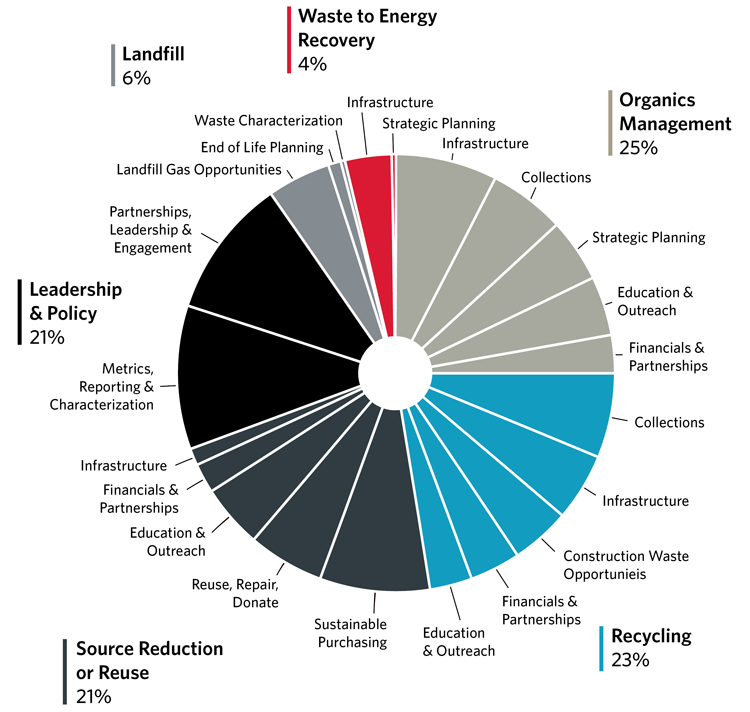
At the heart of climate resilience is the way we create and consume energy. Decarbonization extends to the embodied energy within the materials we use every day. Unless we reach a zero-waste society, waste has to be managed, and an evolution of waste management efforts is vital to mitigate further climate-related risks.
About 70% of waste climate actions center around three principles: source reduction and reuse, recycling and organics management — which clearly align with the waste hierarchy. The focus on sustainability shows how the waste industry’s actions extend beyond climate planning to environmental, social and governance goals, with waste-related solutions addressing multiple facets of ESG.
The plans acknowledge, directly or indirectly, that carbon emissions from solid waste operations can be deceiving. While direct emissions generally represent a small percentage of a community’s greenhouse gas inventory, indirect or consumption-based emissions, including the embodied carbon within discarded materials, is the largest source.
Surprisingly, in most cases, waste planners and solid waste facilities representatives were not involved in developing the plans. Community stakeholders often drove the topics, as well as climate planners evaluating carbon emissions, and policymakers. As a result, the language used in the climate action plans was different than language typically seen in solid waste plans, while addressing the same communities, policymakers, residents, organizations and communications channels.
Climate Action Plans align with Waste Management Hierarchy
We connected the five waste management hierarchal principles to the 300-plus waste climate actions identified. A sixth principle, leadership and policy, is necessary to take on all climate-friendly waste solutions and added ESG benefits.
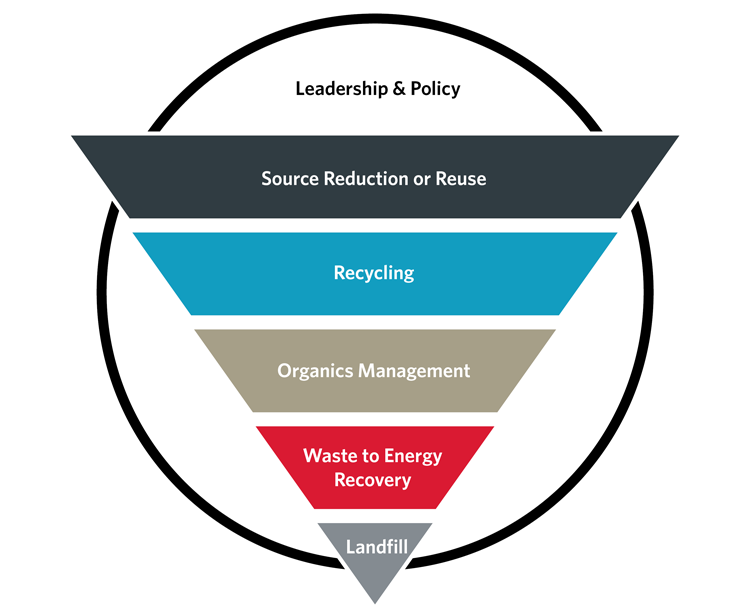
Leadership & Policy
Leadership and policy are intertwined in the delivery of all waste climate actions. They're necessary to reach waste’s true ESG potential. Climate action plans are focused on various forms of partnership, leadership and engagement to drive collaboration and change, which leverage leadership and support engagement activities that contribute to overall ESG improvement. Metrics, reporting and characterization are centered on climate actions that show the importance of tracking metrics, developing data solutions, and creating reliable ESG reporting procedures. Both actions display how circular-economy and waste management plans play pivotal roles in aligning waste climate actions to provide effective ESG solutions.
Leadership & Policy Climate Action Plan Alignment
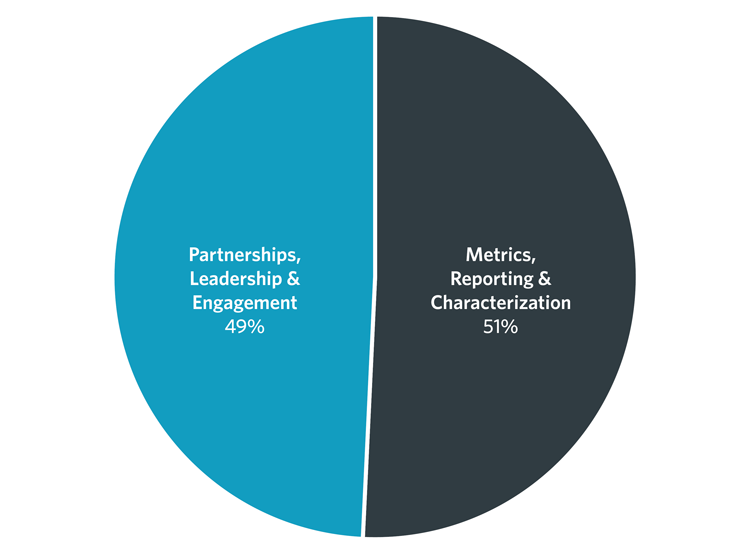
High-level Opportunities for Leadership & Policy
- Assist in the delivery of solutions that unify strategies and help to integrate the strategies within leadership and the business culture.
- Collaborate with stakeholders to promote strong partnerships that help to integrate waste solutions, and participate in discussions about successful delivery of ESG, circular economy and zero-waste actions.
- Support and develop strategies to optimize operational effectiveness for our clients, including change management solutions. For example, the City of Lincoln, Nebraska plans to maintain its AAA bond rating, in part, by disclosing annual greenhouse gas emissions and implementing an environmental management system.
We’ve helped clients across North America develop and implement waste solutions that strategically align with climate and ESG goals. The City of Toronto has long been a leader in driving toward a zero-waste future. We’ve valued the opportunity to work alongside them in developing their long-term waste management plan, and the city's climate action plan was included in our research. Part of its plan includes diverting 70% of waste away from the landfill, focusing on waste reduction, reuse and recycling, and promoting resource conservation and reduced environmental impact. Guiding that process was part of our inspiration to research the climate action plans of other cities and counties, learning about the goals our communities are driving towards.
Once leadership and policy are addressed, opportunity arises to identify driving forces behind waste climate action decisions, and plan for core processes that support climate action. Across all five principles of the waste management hierarchy, financial support and partnerships, infrastructure, and education and outreach are critical elements needed to support the waste reduction and reuse journey.
1. Source Reduction or Reuse
Twenty-two percent of climate actions focused on source reduction or reuse, which is vital to prevent over-consumption and extend the life of goods and materials. Source reduction or reuse leads to deliverable ESG prospects, such as achieving zero-waste goals and reducing direct and indirect carbon emissions.
Source Reduction or Reuse Climate Action Plan Alignment
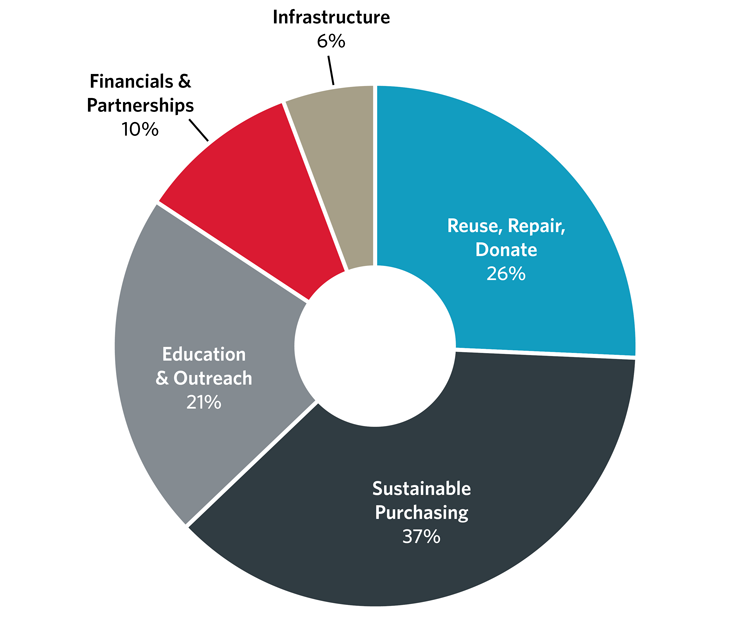
Actions incorporating sustainable purchasing, or reuse, repair and donation opportunities are the building blocks to a circular economy, as it prevents the consumption of raw materials and waste generation, and helps to deliver a sustainable, circular supply chain. In the climate action plans, Toronto empowered businesses to reduce waste and engage in sustainable consumption by establishing a reduction strategy for single use and takeaway items, and Ann Arbor, Michigan, implemented a single-use bag ban or fee.
High-level Opportunities for Source Reduction or Reuse Waste Climate Actions
- Offer access to reuse, repair and donate items at community centers or sustainability campuses.
- Build reuse libraries.
- Share economy between communities and industries.
- Provide education and outreach opportunities to all diversities.
- Track emission savings, such as embodied carbon, carbon emissions, virtual water and water discharges.
- Encourage sustainable purchasing decisions that include reused, repaired, or recycled goods or materials.
- Encourage product repair, especially for items like electronics, solar photovoltaic and electric vehicle batteries that contain rare earth materials.
2. Recycling
Twenty-three percent of climate actions concentrated on recycling opportunities of traditional materials: plastic, glass, paper and metal. Recycling is a fundamental part of the traditional waste hierarchy, and an overarching element of zero-waste and circular economy delivery.
Recycling Climate Action Plan Alignment
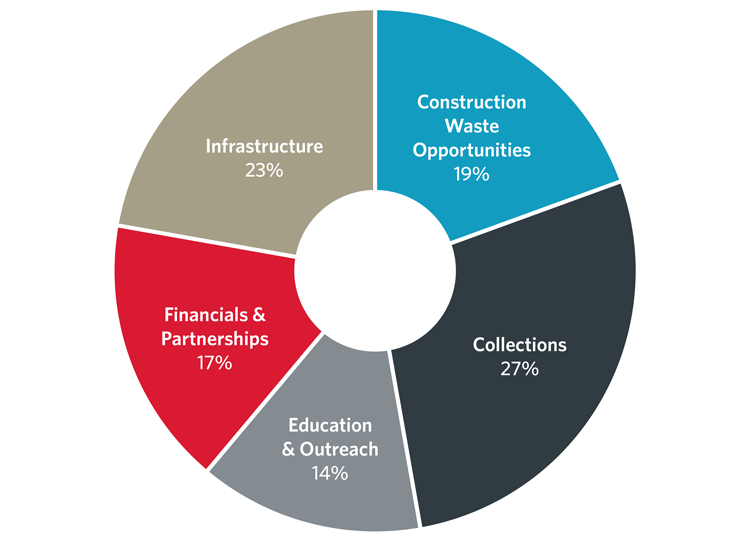
Recycling climate actions show how important a collective community and industrywide approach is in achieving the ESG advantages of exchanging recycled materials and substituting them to avoid raw material use. We found climate-friendly benefits encourage innovative solutions for construction and demolition waste recycling. Further, improving recycling collection systems can have many ESG benefits, with measurable environmental and social opportunities.
High-level Examples of Recycling Climate Actions
- Complete recycling facility improvements that aid in landfill diversion and the overall quality of recyclables. Within many of the plans, there appears to be an understanding that contamination is a challenge. Solutions range from education to increasing infrastructure for quality control to developing policies that enforce that use of recyclables.
- Develop recycling collection points inclusively within a community, especially for disadvantaged populations. Many plans included elements of environmental justice, and the need for increased recycling in multi-unit buildings.
- Provide education to improve recycling quality, and to maximize recycling collection potential.
- Consider environmental and social aspects of recycling collections and waste hauling services.
- Collaborate to build and expand markets for recycled materials.
- Track and report recycling rates, and providing assistance in recycling characterization studies.
- Evaluate the environmental benefits of diverting C&D waste from landfills, and consider the embodied carbon savings that may be possible, especially compared to concrete, or the use of fresh raw timber products. The plans had an interesting focus on implementing ordinances for construction and demolition diversion at the source, and enacting building code changes. There was also a focus on technical assistance and market development.
3. Organics Management
At 25%, organics management accounted for the largest proportion of climate actions. Understanding that methane has a greater climate impact than carbon dioxide is the largest potential area for climate mitigation through the climate action plans. Composting and anaerobic digestion were identified as key infrastructural opportunities to provide climate mitigation and adaptation success. It’s vital that processes also aim to understand and improve organics collection measures.
Organics Management Climate Action Plan Alignment
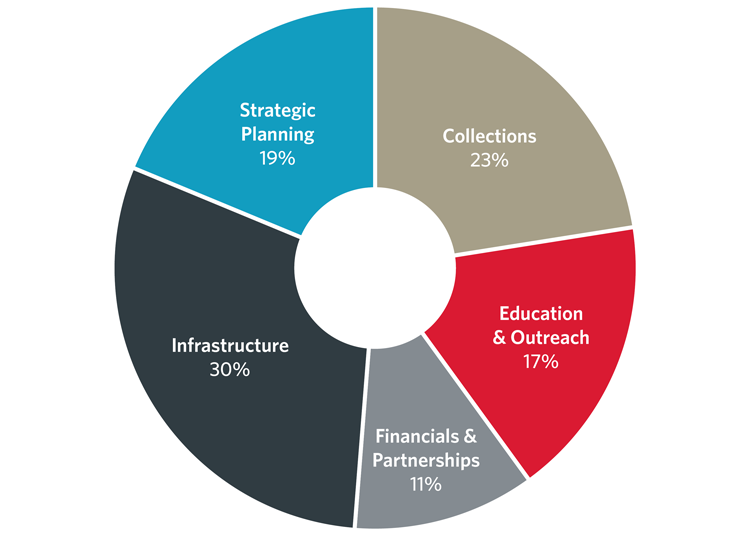
Organics management has the scope to be a pivotal climate solution, but it is only truly valuable if it provides long-term feasibility accessible to an entire community. Interestingly, there were limited strategies on food to people, food rescue, food to animals, and food waste reduction.
High-level Opportunities for Organics Management Climate Actions
- Document environmental benefits, such as carbon emission savings, that have been achieved through the use of waste organics infrastructure.
- Report the volume of food and organics that have been diverted from landfill.
- Provide education and outreach inclusively to the community to improve organics collections.
- Consider options for tracking environmental metrics on home composting solutions, and educate communities on tracking methods.
- Promote and collaborate to expand markets for end products.
- Develop an organics waste management plan, and help to demonstrate where actions can achieve ESG benefits.
- Demonstrate the regenerative processes to our natural resources that compost and digestate provide in both carbon sequestration and soil improvements.
4. Waste-to-Energy Recovery
The traditional waste hierarchy approach prioritizes waste prevention, reuse and recycling before waste-to-energy recovery. Notably, many climate action plans stress WTE as a solution unless a zero-waste society can be reached. The plans included WTE solutions that can supply community electricity and heating needs and generate transportation fuels. WTE recovery opportunities using collected organic wastes were presented in the organics management theme.
Waste-to-Energy Recovery Climate Action Plan Alignment
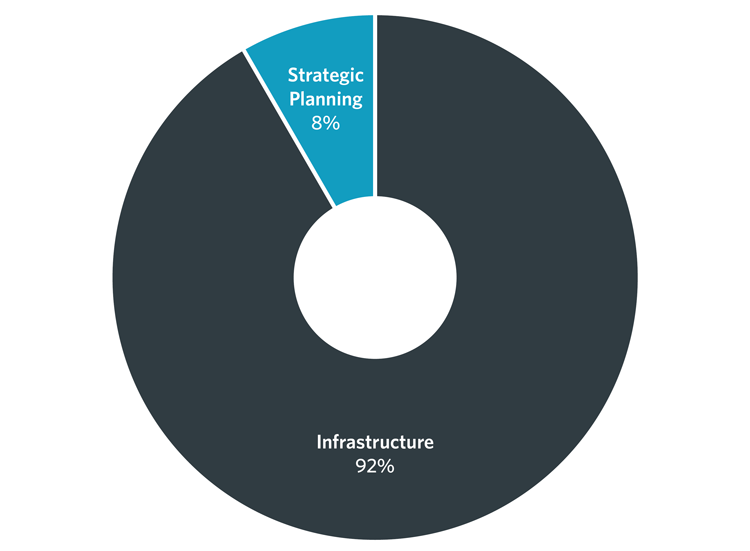
Strategic planning is key in finding where WTE can have the greatest ESG benefit. Solutions may consider environmental gains and outline opportunities for WTE systems to provide valuable social capital.
High-level Opportunities for Waste-to-Energy Climate Actions
- Evaluate emission savings and energy potential from WTE solutions.
- Evaluate and encourage WTE infrastructure that aids in the transition to provide sustainable fuels, and energy as a benefit to communities.
- Evaluate emissions from current energy recovery centers, and outline opportunities for improvement.
- Discuss and demonstrate where WTE solutions fit within circular economy strategies.
5. Landfill
Until widespread waste diversion and management infrastructure is available, landfills will continue to be crucial waste management infrastructure to ensure protection of public health. Climate actions for landfill focused on integrating climate and ESG benefits wherever possible.
Landfill Climate Action Plan Alignment
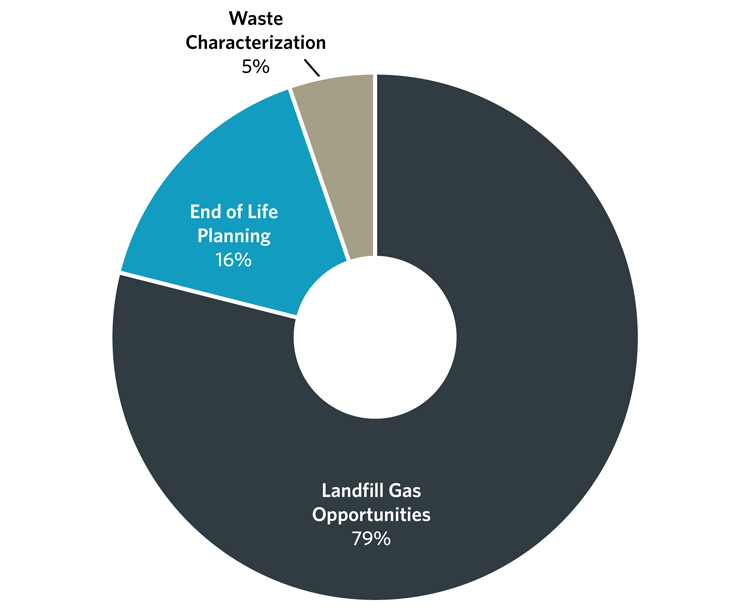
One of the greatest areas of opportunity is capturing landfill gases for environmental benefit. Captured landfill gases aren’t emitted directly into the atmosphere. Instead, they’re used to produce energy beneficial to the community. ESG benefits can also be defined and measured during the end-use planning phase for landfills, considering how the landfill and its surrounding space can be optimized to facilitate environmental and social improvements. Waste characterization studies continue to be vital to understand what materials are being disposed of in landfills, and where materials could ultimately be diverted to strengthen the circular economy and advance waste ESG potential.
High-Level Examples of Landfill Climate Actions
- Development of waste campus.
- Promote and deliver landfill gas capture and recovery options, including feasibility studies. Our research revealed 15 strategies focused on landfill gas development, upgrades and maintenance. Methane emissions from landfills represent a proven and actionable opportunity to capture and utilize a significant energy resource.
- Prevent methane migration to utilize methane capture for beneficial use.
- Install solar arrays on closed landfill sites.
- Use closed landfills as recreational facilities for community benefit.
- When developing end use planning, help to define where there is scope for environmental and social improvements.
- Demonstrate and promote how captured landfill gases could be used by the local community and industries.
- Promote and deliver waste characterization studies and use the results to promote circular economy and zero-waste strategic thinking.
- Advise on daily landfill management that provides environmental benefits, and help to share these benefits, e.g., whether a daily cover can minimize methane emissions, or how clients could use these in their ESG related strategies.
Understanding the driving forces behind community climate actions is an integral part of creating long-term waste management solutions. The zero-waste mark isn't yet a reality, meaning there are opportunities for the waste industry to help develop strategies that address current needs while working toward climate resiliency. Organizational changes can help to achieve and embed new waste-related climate and ESG solutions.
This research is a first step in understanding the driving forces behind community climate actions as an integral part of creating mutually positive long-term waste management solutions. Our waste industry experts are here to help navigate these challenges and assist with culture, leadership and sound strategic integration, allowing for reliable long-term planning of waste-related climate solutions.




